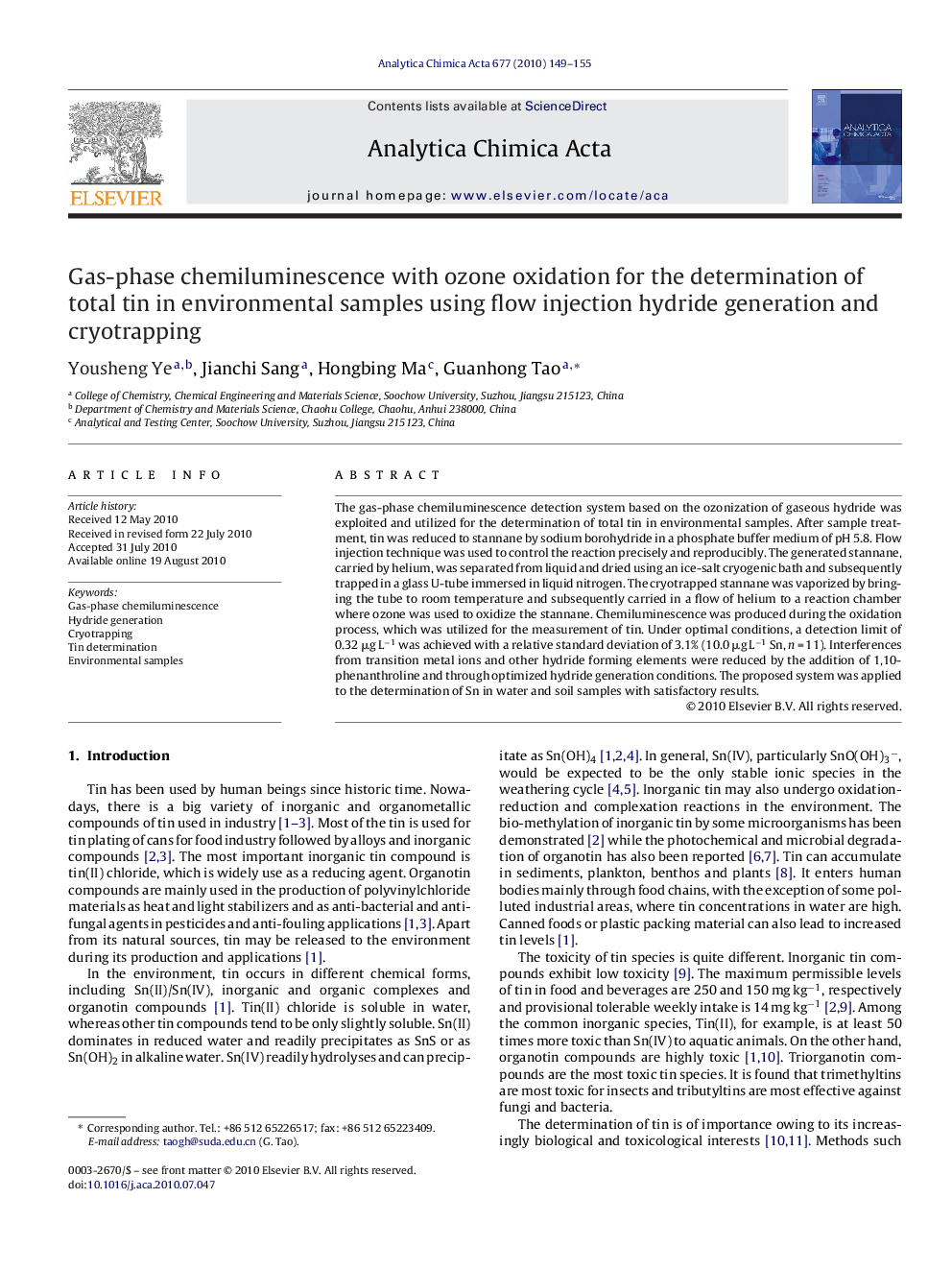| Article ID | Journal | Published Year | Pages | File Type |
|---|---|---|---|---|
| 1167157 | Analytica Chimica Acta | 2010 | 7 Pages |
The gas-phase chemiluminescence detection system based on the ozonization of gaseous hydride was exploited and utilized for the determination of total tin in environmental samples. After sample treatment, tin was reduced to stannane by sodium borohydride in a phosphate buffer medium of pH 5.8. Flow injection technique was used to control the reaction precisely and reproducibly. The generated stannane, carried by helium, was separated from liquid and dried using an ice-salt cryogenic bath and subsequently trapped in a glass U-tube immersed in liquid nitrogen. The cryotrapped stannane was vaporized by bringing the tube to room temperature and subsequently carried in a flow of helium to a reaction chamber where ozone was used to oxidize the stannane. Chemiluminescence was produced during the oxidation process, which was utilized for the measurement of tin. Under optimal conditions, a detection limit of 0.32 μg L−1 was achieved with a relative standard deviation of 3.1% (10.0 μg L−1 Sn, n = 11). Interferences from transition metal ions and other hydride forming elements were reduced by the addition of 1,10-phenanthroline and through optimized hydride generation conditions. The proposed system was applied to the determination of Sn in water and soil samples with satisfactory results.
